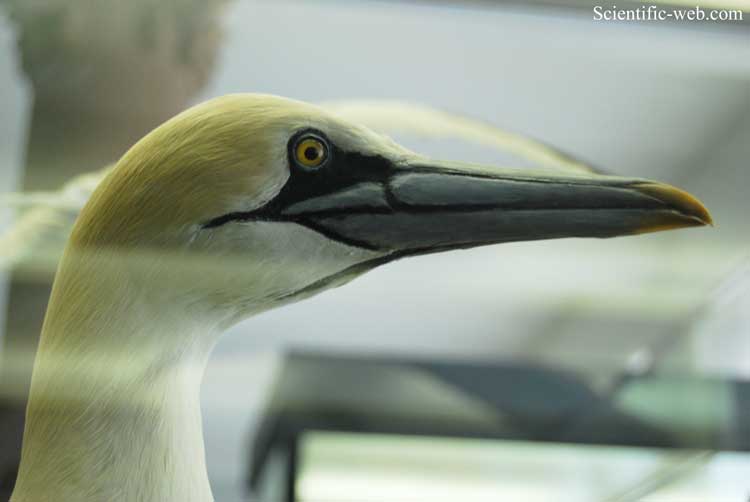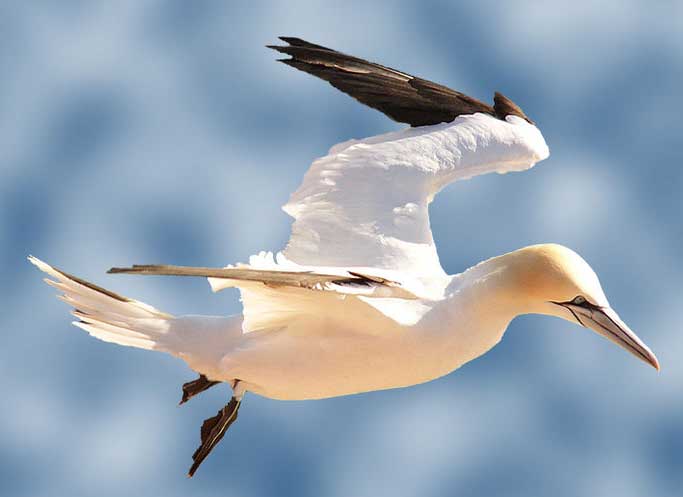Morus bassanus, Photo: Michael Lahanas Cladus: Eukaryota Name * Morus bassanus (Linnaeus, 1758)
Morus bassanus (*) Reference Systema Naturae ed.10 p.133 Vernacular names --------- The Northern Gannet (Morus bassanus, formerly Sula bassana) is a seabird and is the largest member of the gannet family, Sulidae.
Young birds are dark brown in their first year, and gradually acquire more white in subsequent seasons until they reach maturity after five years. Adults are 81–110 cm (32–43 in) long, weigh 2.2-3.6 kg (4.8-7.9 lbs) and have a 165–180 cm (65–71 in) wingspan. Before fledging, the immature birds (at about 10 weeks of age) can weigh more than 4 kg (8.8 lbs). Their plumage is white with black wing tips. The bill is light bluish. The eye is light blue, and it is surrounded by bare, black skin. During breeding, the head and neck are brushed in a delicate yellow. Distribution In the United Kingdom, gannets are a protected species. However, a legal exception is made for the inhabitants of the town of Ness (also known as Port Nis) of the Isle of Lewis who are allowed to kill up to 2000 gannets (locally known as guga) annually to serve as a traditional local delicacy—the taste is described as fishy.[1][2] Many of these gannets are taken from Sula Sgeir which is itself named after them. Ecology Gannet pairs may remain together over several seasons. They perform elaborate greeting rituals at the nest, stretching their bills and necks skywards and gently tapping bills together. They are migratory and most winter at sea, heading further south in the Atlantic. These birds are spectacular divers, plunging into the ocean at high speed. Although they are pul and agile fliers, they are clumsy in takeoffs and landings. They mainly eat small fish (2.5-30.5 cm in length) which gather in groups near the surface. Virtually any small fish (roughly 80-90% of the diet) or other small pelagic species (largely squid) will be taken opportunistically. Various cod, smelt and herring species are most frequently taken.[4] Although Northern Gannet populations are now stable, their numbers were once greatly reduced due to loss of habitat, removal of eggs and killing of adults. Predators of eggs and nestlings include great black-backed and herring gulls, common ravens, ermine and red fox. The only known natural predator of adults is the bald eagle, though large sharks and seals may rarely snatch a gannet out at sea.[5] Old names for the Northern Gannet include solan, solan goose and solant bird.
1. ^ Culture Hebrides - Island holidays in the Gaelic Heartland of Scotland * BirdLife International (2004). Morus bassanus. 2006. IUCN Red List of Threatened Species. IUCN 2006. www.iucnredlist.org. Retrieved on 9 May 2006. Database entry includes justification for why this species is of least concern Source: Wikispecies, Wikipedia: All text is available under the terms of the GNU Free Documentation License |
|


